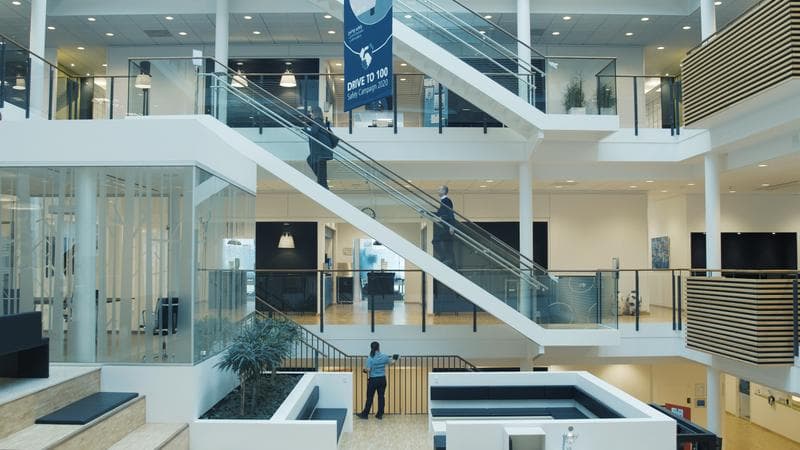Workplace experiences serve as the glue that binds an organisational culture. Through service moments, employee events and spatial design, places can become more than just walls and desks – they become spaces where people can do their best, most productive work. And have fun while doing it.
But in a world where more and more professionals meet online, do we even need workplace experiences? According to Signe Adamsen, Head of Workplace Experience at ISS, we need it more than ever – and we need a plan for a hybrid model of on-site and remote workplace experiences.
A lasting impact on the future of work
COVID-19 has led to drastic changes in the way we work. Thanks to the world’s largest remote working experiment, we’re learning about what works and what doesn’t. Physical workplaces are often much better at creating healthy workdays for people, with more balanced, nutritious food services, a more ergonomic work environment, better air quality, and a whole host of other benefits. Employees working from home on a frequent basis might experience a lack of collaboration and communication, a feeling of disconnection and loneliness as well as mental and physical health issues.
“Unplugging after work, mental health issues and poor teamwork are just a few of the trials workers are now facing. This creates issues with employee engagement and can carry a real cost for businesses – both in terms of lost productivity but also loss of talent as employees look for new and more exciting opportunities.”
While the concept of working from home has gained extra relevance in recent months, the shift towards a hybrid model with a mix of on-site and remote work has been underway for many years – long before the pandemic hit. Advances in technology have played a big role in this development.
“Technology has enabled more flexible working conditions through virtual meetings and online platforms, so today’s employees have greater opportunities for collaboration and communication,” says Signe. “That builds a bridge between the home, the office and even third places – such as co-working solutions.”
For employers willing to offer remote work, there are huge advantages when it comes to recruiting and retaining top talent. According to a recent study by Slack, 72% of knowledge workers surveyed want a combination of office and remote work. Another recent study suggests, that allowing employees the flexibility to work from anywhere can increase productivity by 4.4%.
This trend will need to be addressed by workplace strategies – in the short and long term. Demand will increase for great, individualised service experiences that support employees working at the office, at home, or maybe even at meeting hubs within the local community – places where the selection of technologies exceeds that of the home office.
For employees working remotely, experiences will aim to provide flexibility in where and when to work, support productivity, connectivity, physical and mental wellbeing, and ensure that corporate security guidelines are complied with, when working outside the office. It also plays a crucial role in nurturing a strong sense of belonging through virtual events, such as Friday happy hour meetups, quiz contests, yoga and other physical activities.
For the physical office, there will be a need to emphasise its role as a mutual arena for collaboration, communication, innovation and informal meetings to take place in many formats – addressing the varied needs of different communities and work cultures.



